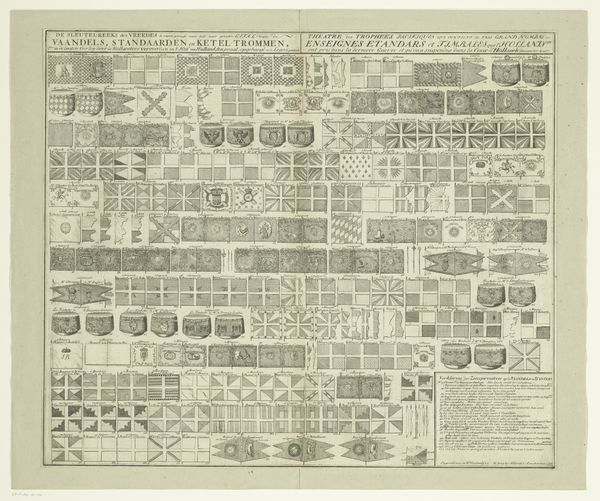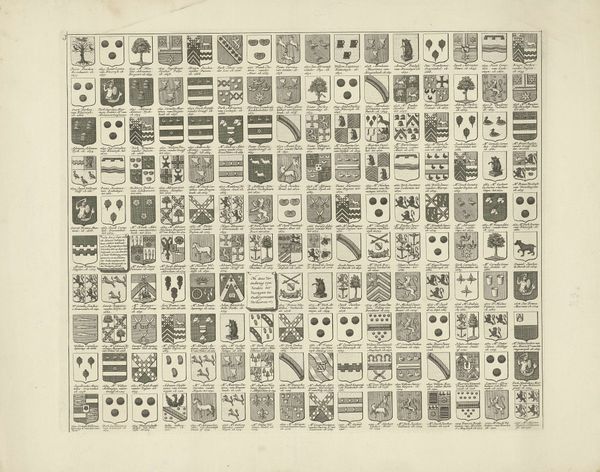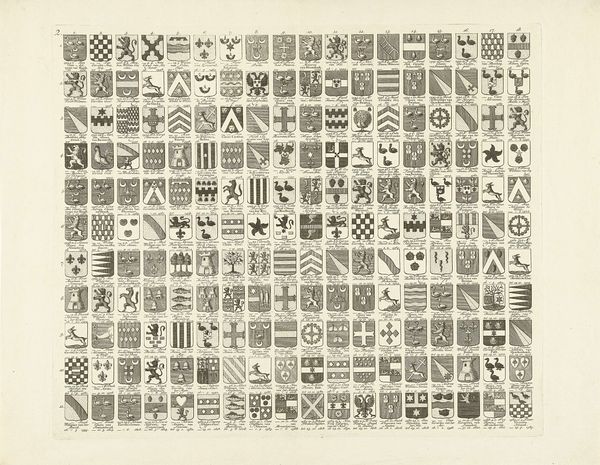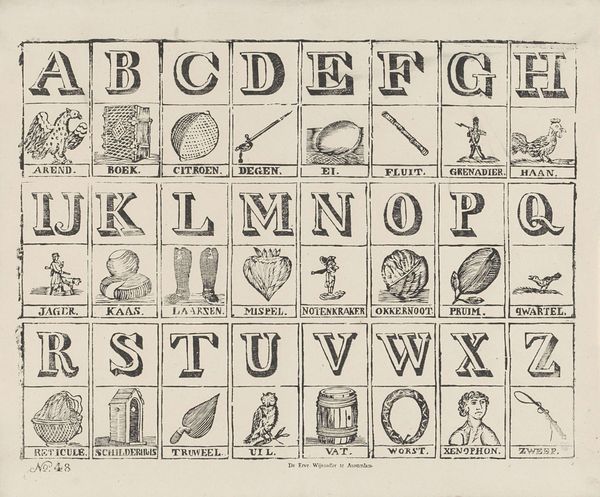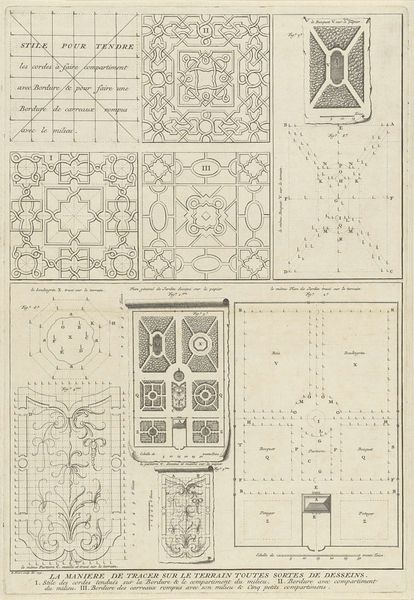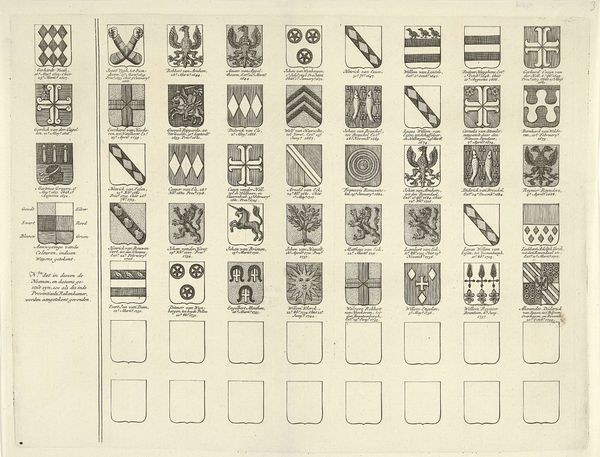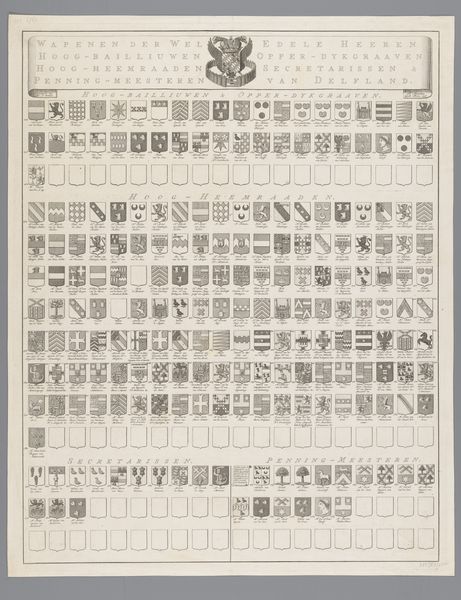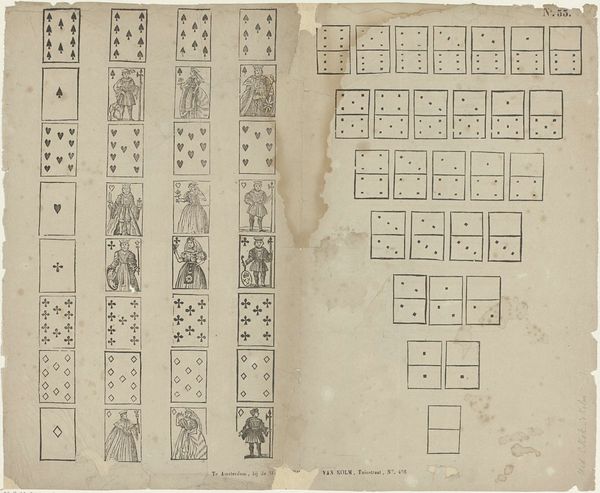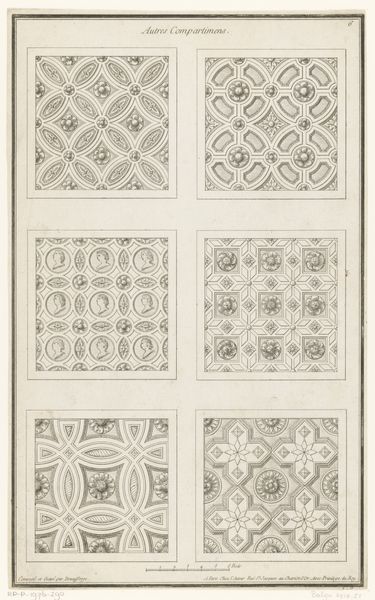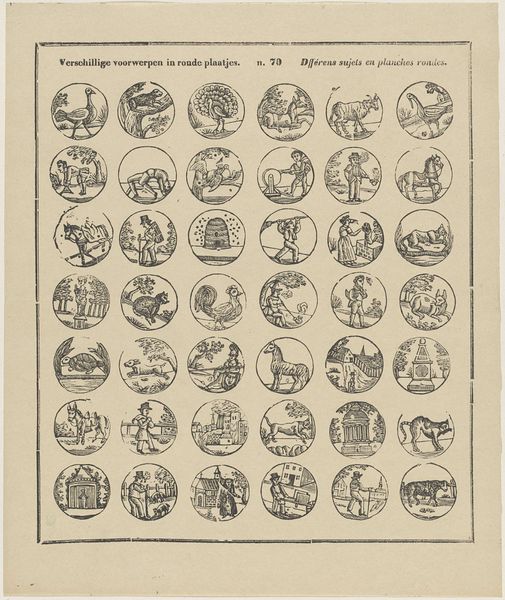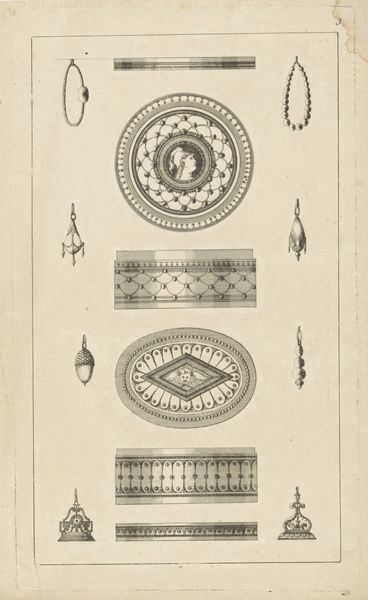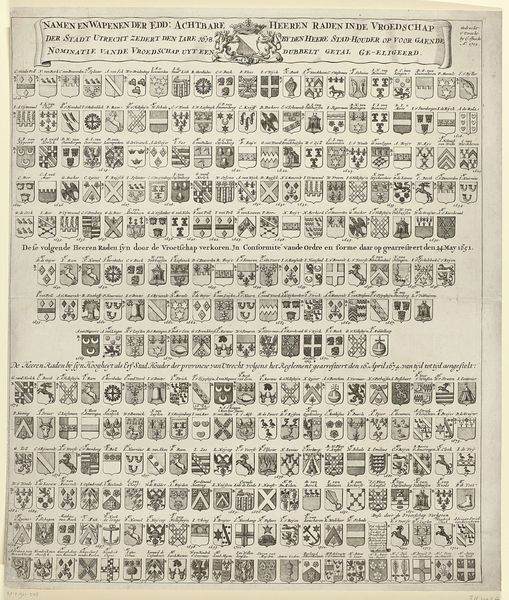
drawing, graphic-art, lithograph, print
#
drawing
#
graphic-art
#
lithograph
# print
#
genre-painting
#
academic-art
Dimensions: sheet: 17 1/8 x 12 5/8 in. (43.5 x 32.1 cm)
Copyright: Public Domain
Curator: This sheet presents a lithograph created by Juan Llorens between 1855 and 1865, titled "Sheet of Playing Cards for Children." Editor: The first thing that strikes me is the graphic simplicity. Black ink on off-white paper; the textures look smooth and rather matte. Did Llorens consider the potential for wear and tear on this kind of printed material, knowing that children would interact with it? Curator: Undoubtedly. Lithography allowed for relatively mass production, making it accessible. The graphic simplicity catered to children while also aligning with the period's broader aims to educate and moralize through play. Playing cards became a vehicle for disseminating societal values. Editor: Right, the suits are interesting. We see clubs, swords, cups, and coins... Are those typical for Spanish playing cards? What about the materiality of money: coins rendered flatly on a card. I wonder about the original value, both as paper stock, printing cost, and implied wealth via its symbolic representation. Curator: Exactly. The suit symbols derive from traditional Spanish card decks, rooted in medieval social structures: swords for nobility, cups for the clergy, coins for merchants, and clubs for peasantry. Using these well-known images would facilitate instruction. Editor: So these weren’t simply games; they were subtle lessons in hierarchy. Also, each individual drawing looks almost mechanically rendered and identical: a sort of early industrialized leisure. Did that mechanization make it more available? Curator: Absolutely, making the game affordable opened distribution. Also consider who had the capital to support an artist like Llorens producing prints in 19th century Spain. Disseminating these prints undoubtedly played a vital part in the era’s public visual culture and contributed significantly towards modern modes of representation and education. Editor: This recontextualizes my perspective. Knowing the printing itself became a form of pedagogy shifts its impact profoundly. It’s no longer only a deck of cards, but evidence of something beyond gameplay. Curator: Precisely. Seeing the sheet within the era's social context really underscores how such an item could convey explicit social cues about hierarchy and worth.
Comments
No comments
Be the first to comment and join the conversation on the ultimate creative platform.
